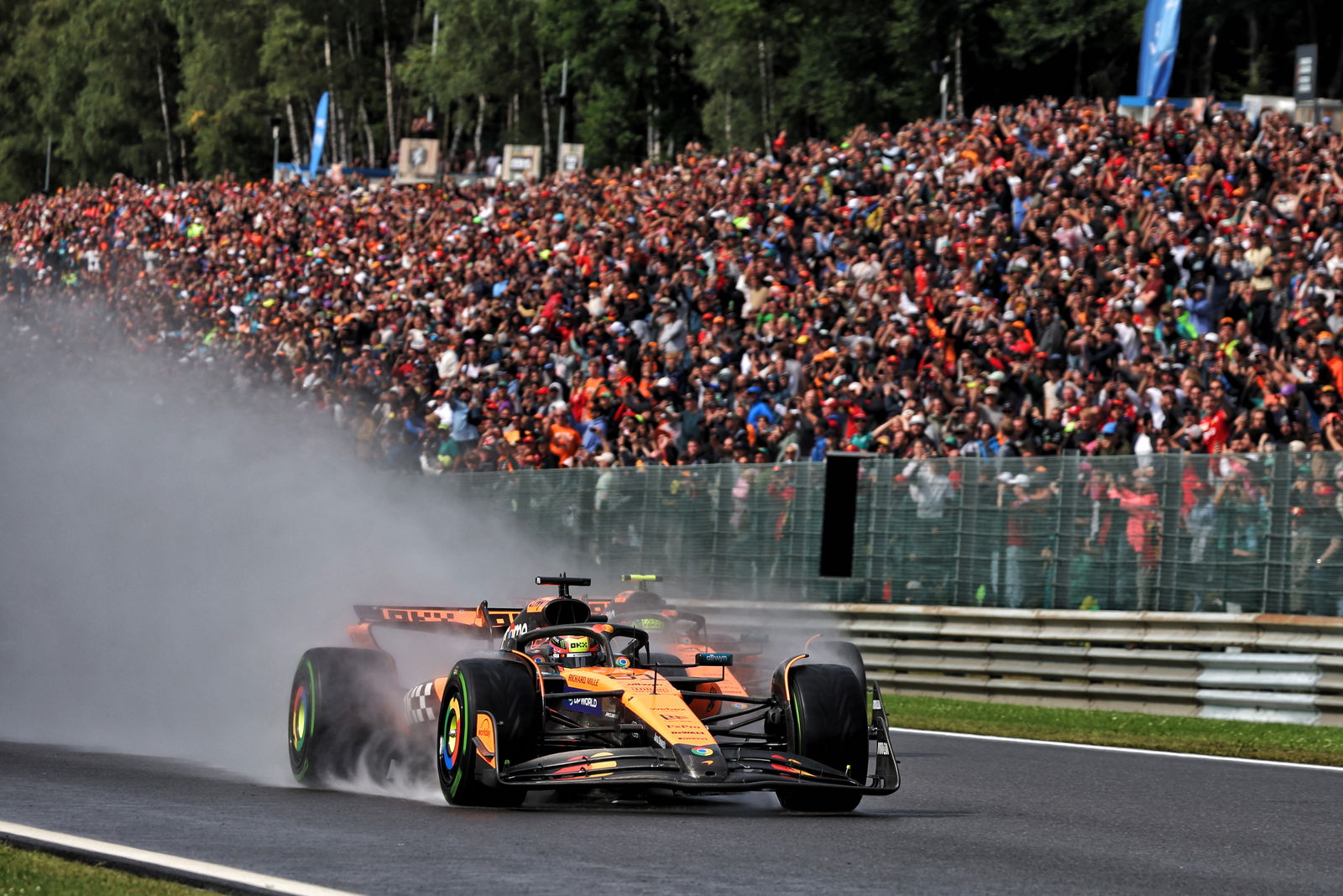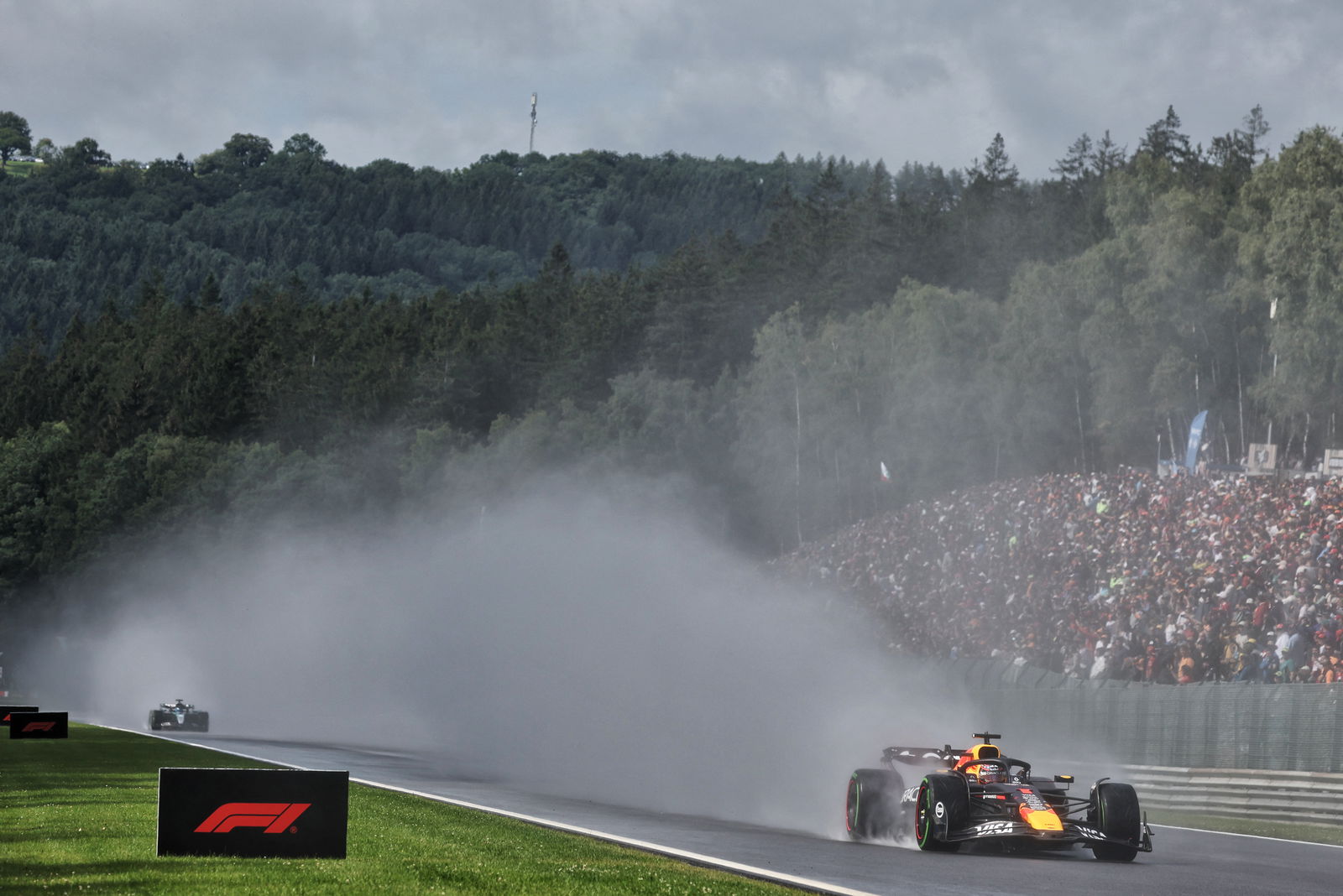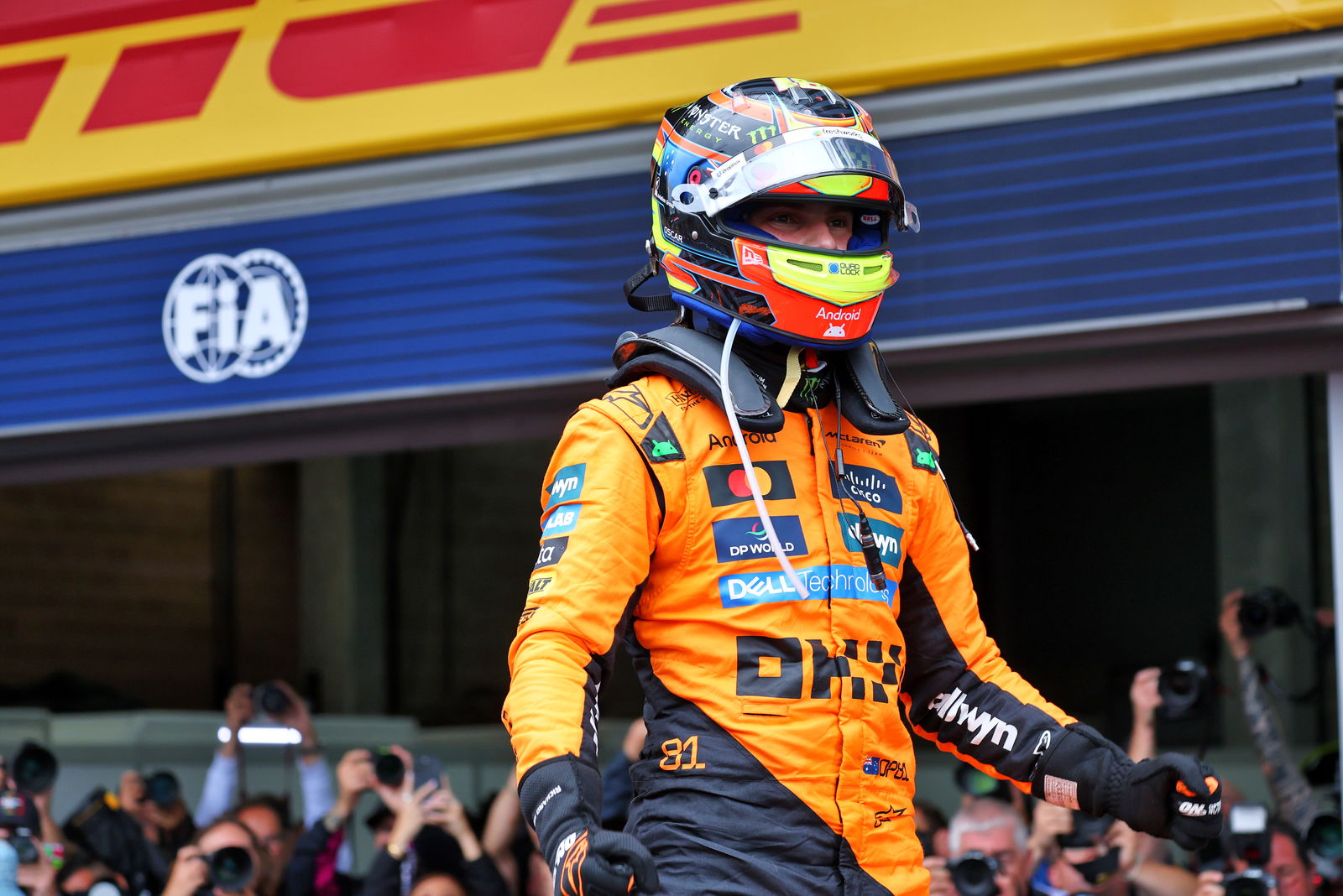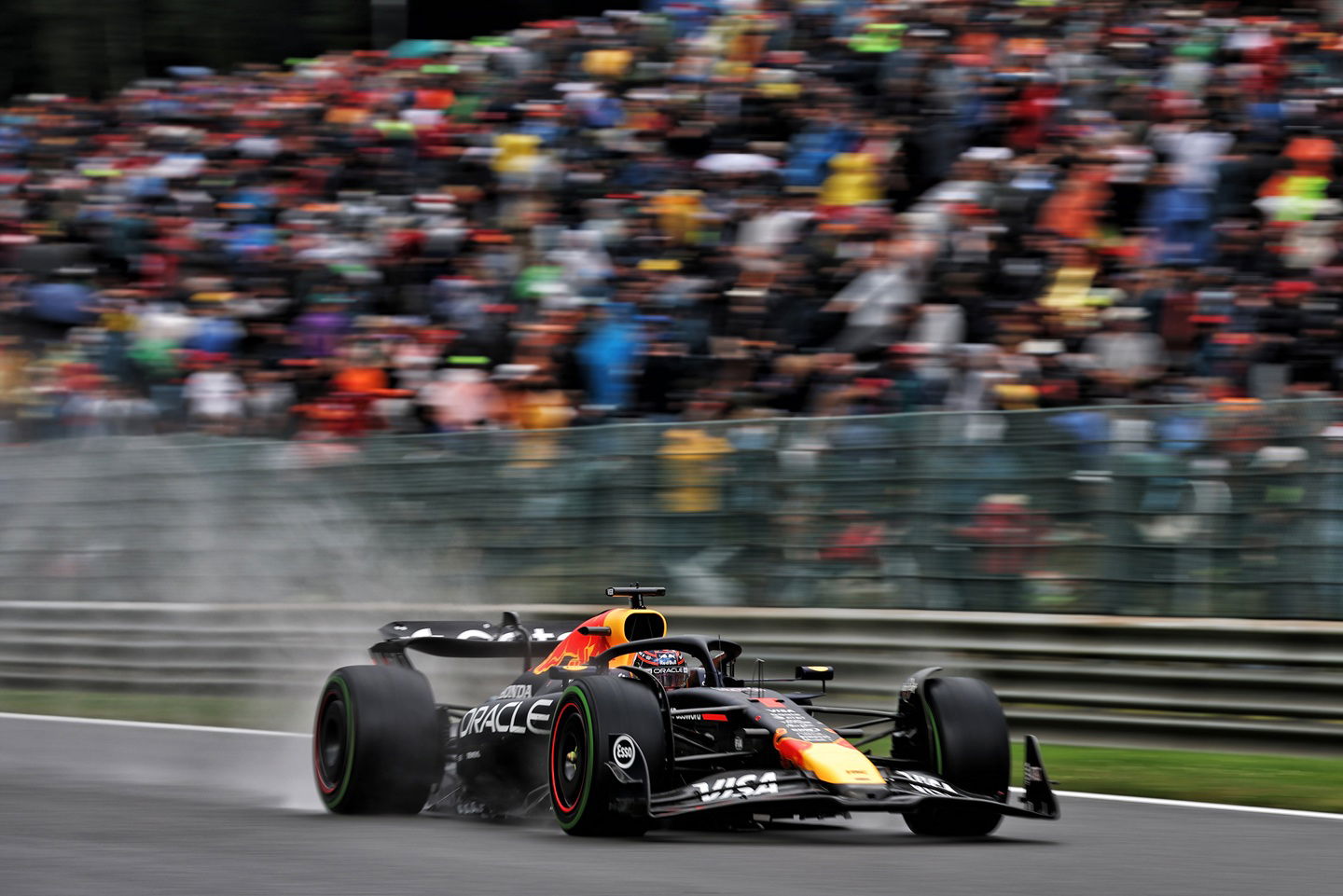Our experts tell the FIA - this is how wet F1 Belgian GP should have been handled
Crash.net experts explain how wet weather should have been handled at F1 Belgian GP

The 2025 F1 Belgian Grand Prix has brought scrutiny on how the sport deals with wet weather.
There was a delay of one hour and 20 minutes to the start time, after a morning of heavy rain at Spa, which is notorious for its weather.
The grand prix started with a formation lap behind a Safety Car but was red-flagged. Drivers then complained of poor visibility, even when it was no longer raining.
More running behind a Safety Car, until the track was nearly dry, meant drivers were prevented from racing in proper wet conditions.
Max Verstappen and Lewis Hamilton were among the drivers to debate how the FIA approached the situation.
Crash.net experts now tell the FIA what they should have done - and the negative impact of what they chose to do…
Are wet F1 races now a thing of the past?

Lewis Larkam: At one moment, when the sun broke through the clouds and shone down on the soaked Spa-Francorchamps circuit, sat watching from the media centre as nothing happened on track felt a bit ridiculous.
Safety is of course the priority, and that view is particularly understandable given Spa's recent tragic history and the specific nature of the high-speed circuit.
The FIA faced a tough decision. They were damned if they did, and damned if they didn’t, with every call bound to face intense scrutiny. Ultimately, they played it safe and we got the entire 44-lap race distance completed in a safe manner. Visibility was too poor to race at the original start time, though I think we could have gotten underway a bit quicker than we did.
A rolling start also felt unnecessary. Conditions were perfectly fine for a standing start on the grid, a view shared by Lewis Hamilton, and the drivers were debating about switching onto slicks as a drying line quickly emerged.
While safety is paramount and I understand the caution, I also find myself agreeing with Max Verstappen. I think back to the 2007 Japanese Grand Prix and 2008 British Grand Prix, both of which took place in far worse conditions and poor visibility, and yet produced great, and safe, races.
F1 has effectively got to the stage where we will no longer go racing in the wet and that is both frustrating and a shame.
F1 fans robbed of a potentially classic grand prix
Connor McDonagh: The cautious approach adopted by race director Rui Marques arguably robbed us of a classic wet race at Spa-Francorchamps. Instead, we got a clear demonstration of everything that’s wrong with modern F1 cars.
They produce too much spray, they can’t follow each other closely, and even if you’re within half a second of another car down a long straight, you still can’t overtake.
There was a clear window at 3pm local time when cars could have run several laps behind the Safety Car. Instead, the race was red-flagged - despite rain not even falling at that point.
By the time race control finally got the race underway, conditions were already close to dry. From a sporting perspective, those who had gambled on a wet setup were punished, and any strategic element - like we saw at the British GP - was completely nullified.
Aside from a few standout moves from Lewis Hamilton, the race quickly turned into another lacklustre affair. It’s a shame that newer fans of the sport - especially those who started watching since 2021 - are probably wondering why Spa has such a legendary reputation when recent races have been so underwhelming.
Wet weather has produced some of the best races in F1 history, and sadly, we didn’t get to see one unfold on Sunday.
F1 must address the elephant in the room

Rachit Thukral: Drivers and fans alike have long criticised Pirelli’s wet-weather tyres for not being up to the task in the very conditions they’re designed for. Even with a new generation of full wets introduced this year, the blue-marked tyres remain a rarity in Formula 1.
At a time when both F1 and the wider world are pushing for sustainability, it's alarming to consider that Pirelli still transports 60 sets of wet tyres to every standard race weekend (and 40 for sprints). While the company does a commendable job of recycling both used and unused rubber, it’s time for F1 and Pirelli to decide whether to improve the full wet or remove it from the range altogether.
The issue with the wet-weather tyres isn’t simply about how effective they are at displacing water. In fact, the new-generation of full wet compounds developed by Pirelli this year are capable of shifting over 85 litres of water per second at 300km/h.
Instead, the real problem preventing drivers from racing in heavy rain is a lack of visibility. Isack Hadjar's crash with Kimi Antonelli during the safety car restart at Silverstone was the perfect example of how poor visibility can lead to major incidents, irrespective of how good or bad the tyres are.
The spray produced by wet tyres makes it harder for drivers to see what is going on ahead of them, but there are other factors that also compromise visibility in wet conditions.
It’s time for the FIA, Pirelli and the teams to treat this as a shared priority and find a genuine solution.
Inflexibility is making F1 look stupid
Lewis Duncan: There is always a safety element to consider, and Spa more than most places tends to highlight the dangers of driving in the wet. These modern F1 cars create too much spray, creating visibility problems largely on the Kemmel straight where moisture is then held in place by the trees lining the circuit. That's a problem that won't go away any time soon, though the lack of a usable wet tyre is arguably the biggest issue when it comes to wet F1 races.
That Pirelli has been allowed to carry on providing a useless tyre while F1 has done nothing to address this is an embarrassment. Wet testing is hard for Pirelli to do, granted, but Pirelli's full wet used to be a good tyre and Bridgestone's extreme rain compound was even better. F1 needs to act urgently.
But with the state of the current cars and the rubbish Pirelli wet tyre problems not going away anytime soon, F1 needs to start building more flexibility into its schedules and decision making. The over hour-delay to the Belgian GP could have been easily avoided had the start time been moved forward an hour or two. Did not a single body within the FIA, nor F1 management, have a reasonably reliable weather radar it could have looked at on Saturday, determined there was a risk, recalled the shambles of Spa 2021, and called well in advance a change to the start time to avoid the worst of the weather?
Yes, support races may face an axe with any schedule change. But these aren't the show.
People pay to come to races to see F1 cars in action, and it's why they also give up so much of their Sunday afternoons. By not altering the schedule, the fans were sat in the worst of the weather with nothing to do while bored TV viewers were left pondering if there was any point carrying on. Even starting an hour earlier, cutting out the pre-grid pomp and getting on with it would have meant most of the race could have run before the worst of the weather, which would have added a bit of drama to the conclusion of the grand prix.
Instead we had a lengthy wait, an unnecessary amount of safety car laps before the track was not far off being dry and a potentially intriguing race rendered to nothing but a formality with a mild bit of tension in the final laps as the McLaren duo's contra-strategy played out.


